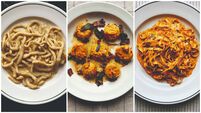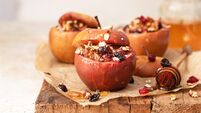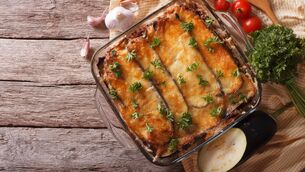Darina Allen: Recipes from students' pop-up dinner at Ballymaloe Cookery School
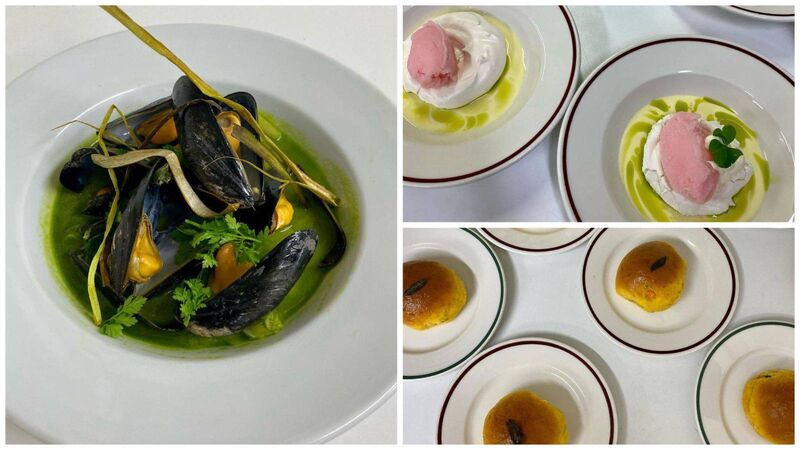
The Ballymaloe pop-up dinner concept was Food from Here, a celebration of the bounty of fresh produce in season.
We’re just about to say au revoir to another group of students, who have been with us here since September last. Fourteen nationalities this time, now winging their ways back round the world to South Africa, Jordan, Panama, Luxembourg, Canada, Trinidad and Tobago, Norway, Netherlands, US, Israel, France, Portugal and of course Ireland and UK. They’ve absorbed the food culture and learned a multitude of culinary skills while they were here and leave with their heads swirling with ideas and dreams, plus a determination to make a difference, not just in food but also in environmental and regenerative farming, wherever they go.
Sage & sweet potato rolls served with brown butter and fried sage leaves: The butter was hand churned from the organic Jersey cream on the farm to accompany the fluffy sweet potato and sage rolls.
Mussel Glas: Ballycotton mussels, kale, Ballymaloe cider broth, leeks and chervil.
Farm to Pork: Pressed Ballymaloe pork belly, ham hock pie, black pudding, pork and leek sausage, red wine sauce, kale purée, served with Bramley apple sauce.
Leek & potato gratin
Bitter leaf salad
Meringue with raspberry kombucha sorbet, crème anglaise and fig leaf oil.
Christina Hotsko’s Sage & Sweet Potato Rolls
They can be served as a tear and share

Servings
12Preparation Time
60 minsCooking Time
25 minsTotal Time
1 hours 25 minsCourse
StarterIngredients
250g sweet potato
a good fistful if sage leaves
60-65g melted butter, cooled
3 tbsp sage
4 tsp honey
12g fresh yeast
1 egg
320g plain flour, sifted
¾ teaspoon salt
a rectangular ‘Swiss roll’ tin (30.5 x 20.5cm)
Method
Add cold water to a small saucepan, just enough to cover the sweet potato, about 150ml. (You will want 120ml of the potato water once the potatoes have been boiled).
Put plenty of sage into the saucepan with water and bring to the boil.
Meanwhile, peel the sweet potato and cut into 1cm size pieces. Add to the sage water and cook until very tender. Once cooked, remove the sage. Strain the potatoes and reserve 120ml of the cooking water for the yeast.
Melt the butter in a saucepan with 3 tbsp of chopped sage. Can add more if desired. Allow to cool.
When the potato water is lukewarm (45-50°C), add 1 teaspoon of honey and the yeast to 120ml potato water. Allow to activate for 5-10 mins.
Meanwhile, mash the sweet potato with a fork or masher. Whisk the egg and add to the sweet potato, along with the remaining 3 tsp of honey. Add most of the cooled melted butter and chopped sage, reserving a small amount for later to brush/coat the tin. Mix to combine.
Sift the flour and salt into a large bowl. Add both the sweet potato and yeast mixtures. Mix together by hand. The mixture will be slightly wet but should still come together.
Transfer the dough to the bowl of a food mixer with a dough hook, coat with a small amount of olive oil and shape into a round. Cover and allow to rise for 1 ½ - 2 hours, or until doubled in size.
Once doubled, knock back the dough and mix together slightly. Cut into approximately 50g pieces and knead each piece of dough into a tight ball. Place on the lightly buttered tin. Allow to rise for another hour until doubled in size. Rolls will touch each other so they can be served as a tear and share later. Bake at 180°C/Gas Mark 4 for 23-25 minutes.
Mussels Glas
The wild mussels came from Ballycotton Seafood, Ballymaloe House Cider and organic apple juice from the Ballymaloe Cookery School orchards.
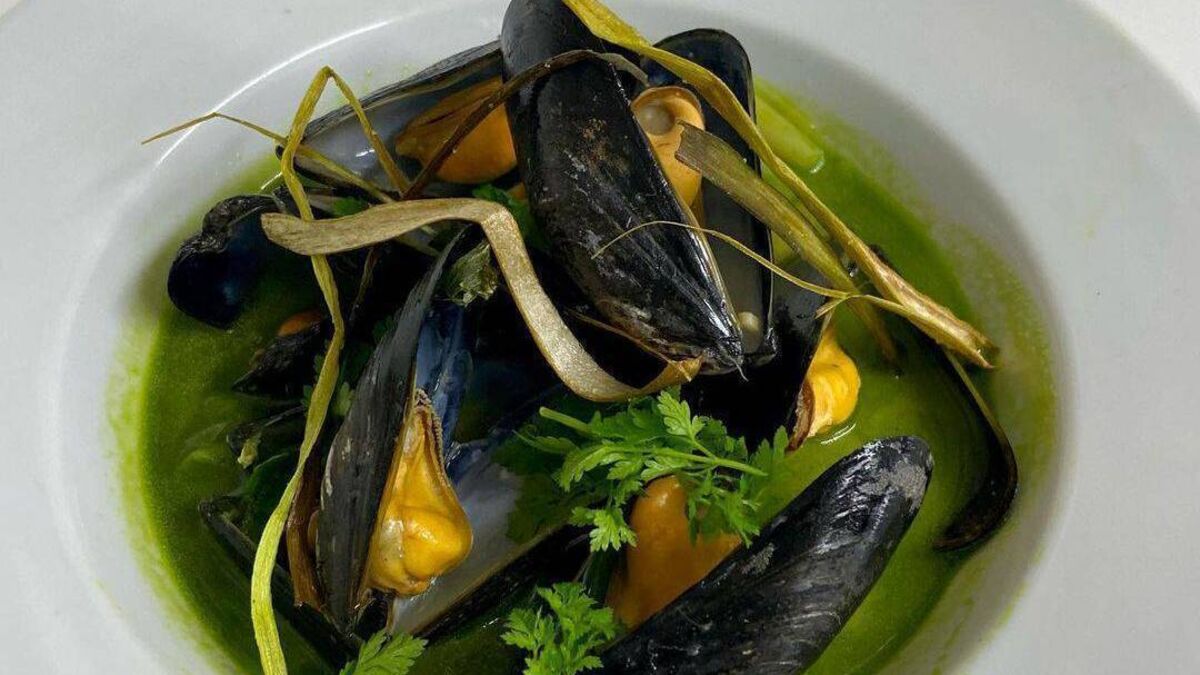
Servings
6Preparation Time
30 minsCooking Time
60 minsTotal Time
1 hours 30 minsCourse
MainIngredients
300g kale (de-stalked)
90g cream
salt
3 small leeks (120g approx.)
extra virgin olive oil
50g butter
4 garlic, thinly sliced
2 shallots, thinly sliced
40ml Ballymaloe House cider
60ml apple juice
36-40 mussels, cleaned and beards removed, discard any that are not tightly shut
To garnish
chervil
Method
Preheat the oven to 160°C/Gas Mark 3.
Begin by making kale and cream mixture. Bring a large pot of salted water to a boil. Blanch the kale leaves until tender, 3-5 minutes. Drain cooked kale leaves in a colander. Purée the kale leaves with the cream until smooth consistency. Season with salt to taste.
Trim off the green leek tops, set aside. Lightly oil the leek stalk and place on a baking sheet. Season lightly with salt and roast in the preheated oven for about 35 minutes or until tender.
Melt the butter in a low sided saucepan when it foams add the sliced garlic and shallot. Sweat the mixture until tender, be careful not to brown. Add the cider and boil until the alcohol flavour cooks off, 5-7 minutes. Add the kale mixture and the apple juice to the saucepan. Simmer on low heat for 5 minutes until all the flavours have combined. Check the seasoning, if it requires more acid, add a teaspoon of cider. If it requires more sweetness, add a tablespoon more apple juice. Put the mixture into a cheesecloth on top of a fine mesh sieve. Squeeze the cheesecloth to ensure all the liquid has passed through. Return the green broth to a clean saucepan and keep it warm on a low simmer. Do not cover or the liquid will discolour.
Once the leeks are roasted. Removed to outer layers to expose the tender interior. Cut into 2cm medallions and add to the green broth. Increase the oven to 200°C/Gas Mark 6. Next take the discarded outer leek layers and green leek tops and cut them into 1cm strips lengthwise. Coat lightly in olive oil and salt. These will be used as a crispy leek topping on the mussels. Distribute them on a baking sheet and bake in the oven until crispy.
Meanwhile, put the mussels into a saucepan on a medium heat. Cook until they open, 2-3 minutes discarding any that do not. Pour mussel cooking liquid into green broth and stir.
To serve, divide the green broth, roasted leek medallions and mussels between bowls. Garnish with crispy leek tops and chervil and serve immediately.
Meringue with Raspberry Kombucha Sorbet
A delicious combination, lots of work to assemble the various components but so worth the effort for the final result.
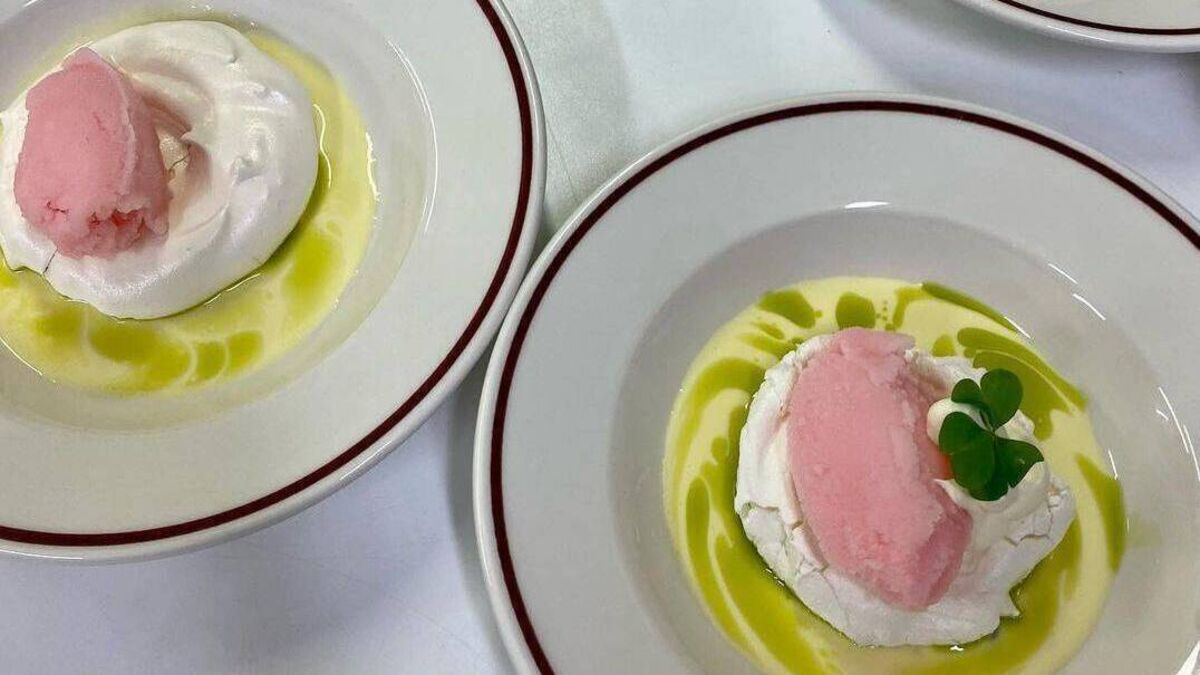
Servings
14Preparation Time
30 minsCooking Time
30 minsTotal Time
60 minsCourse
DessertIngredients
1 x meringue
2-3 tsp fig leaf oil
2-3 tbsp crème anglaise
scoop of raspberry kombucha sorbet
1 tsp of (unsweetened) softly whipped cream
1 leaf of wood sorrel
For the meringue
4 egg whites
220g caster sugar
1 tsp apple cider vinegar
1 tsp cornstarch (cornflour)
For the Raspberry Kombucha Sorbet
400ml raspberry kombucha
250g caster sugar
250g water
juice of ½ lemon
For the Crème Anglaise
400ml milk 1 tsp vanilla extract
4 egg yolks
40g (1 ½oz) caster sugar
400ml cream
For the Fig Leaf Oil
15 medium sized fig leaves
200ml extra virgin olive oil
Method
For the meringue
Preheat your oven. If you have 2 ovens, preheat 2 ovens to 150°C/Gas Mark 2 (conventional). If you have 1 oven, preheat to 135°C/Gas Mark ½ (using fan setting).Using a pencil, mark out the circumference of the meringues to bake. Use a circular shape, e.g. a bowl or wide glass, with a diameter of 6-7 cm. Mark 14 circles and leave approximately 2cm space between them, because the meringues expand slightly in the oven.
Whisk the egg whites in a stand mixer or with a handheld mixer until they form stiff peaks, then gradually whisk in caster sugar, one tablespoon at a time, until the meringue looks glossy. Whisk in the vinegar and cornstarch. Spread the meringue inside the circle, creating a crater by making the sides a little higher than the middle. Turn the oven down to 110°C/Gas Mark ¼. Bake for 45 minutes, then turn off the heat and let the meringues cool completely inside the oven.
For the Raspberry Kombucha Sorbet
Prepare the sugar syrup by dissolving together equal parts of sugar and water in a saucepan, boil for 2 minutes and allow to cool.Put containers in the freezer to store the sorbet.
Blend the chilled sugar syrup, chilled kombucha and lemon juice and churn in an ice cream machine. Put in the cold container, cover and put in the freezer for at least 1 hour.
For the Crème Anglaise
Bring the milk almost to the boil with the vanilla extract.In a Pyrex bowl, beat the egg yolks with the sugar until thick and light. Whisk in the hot milk in a slow and steady stream. Replace in a clean saucepan and cook over very low heat, stirring constantly with a flat-bottomed wooden spoon, until the custard thickens slightly. Your finger should leave a clear trail when drawn across the back of the spoon. Remove from the heat at once and strain. Cool. When completely cooled, mix in two-thirds of the unwhipped cream. Taste and check texture and add more cream if needed.
Note: The mixture is transferred to a clean saucepan to avoid the mixture catching on the bottom of the pan).
For the Fig Leaf Oil
Bring a pot of water to the boil and prepare a bowl with ice and water. Blanch the fig leaves in the boiling water for 20 seconds, to brighten up the colour. Remove the leaves from the pot and immediately drop them in the ice water. Using your hands, wring out all the excess water from the leaves. Add the leaves with the oil to a blender. Blend until completely smooth, approximately 2-3 minutes.Pour the mixture in a sieve lined with a coffee filter or a muslin cloth. Let this drip overnight If stored airtight, the oil can be kept for up to 3 months.
Look out for the Spice Genie Kitchen and Food Truck along the Distillery Walk in Midleton. Its devotees love the delicious, home cooked, authentic Indian take-away food. Chef Christopher Braganza was the popular winner of RTÉ’s Battle of the Food Trucks TV series in 2022.
Open Tuesday and Wednesday from 12-7pm; Thursday and Friday from 12-8pm and Saturday from 5-8pm.
You’ll also find the Spice Genie Kitchen at Midleton, Wilton and Kinsale Farmers’ Market. How fortunate are we all to have access to many delicious ethnic flavours to enliven our lives.
spice_genie
Congratulations to Daddy’s celebrating their 4th birthday recently. It’s become a much loved venue in Rialto, definitely deserves a place on your Dublin list with another of my absolute favourites – Assassination Custard just opposite the Garda HQ on the corner of Kevin Street. Open 12-2pm on Tuesday and 12-3pm Wednesday – Friday, there's usually a queue from 11.45am but it's worth the wait.

